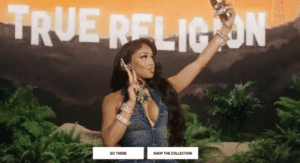
I’ve won and lost four mayorships in the past six months. To my credit, I leveraged my time in office to earn a few kickbacks (discounted meals and a free glass of wine), but I lost each title within days of winning one. This dubious achievement doesn’t make me a bad politician—it makes me an unreliable player of Foursquare, a social check-in game.
We’re in the middle of a boom for these location-based services (LBS) where people earn rewards (e.g., points, badges, free glasses of wine, etc.) for “checking in” at a business with a GPS-enabled mobile device. While the space doesn’t come close to rivaling the adoption rate of social networks like Facebook, it’s definitely growing (Foursquare claims 7.5 million users). With the growth, more businesses want to reward people for visiting and announcing their presence (and, ideally, their loyalty).
The major LBS providers often position their services as a new form of customer-loyalty programs. The virtual rewards and instant discounts replace the traditional “earn points now, redeem rewards later” model. Three of these major players include:
Foursquare: The best known in the space, Foursquare works with more than 400,000 companies (members of Foursquare’s Merchant Platform as of April 2011). Foursquare attracts consumers by providing discounts and status in exchange for in-store visits—and it’s working. Radio Shack reported customers who received a discount through Foursquare generally spent 3.5 times more than non-users per transaction.
SCVNGR (pronounced “scavenger”): Touted as a game platform, SCVNGR requires more than “checking in.” The platform asks players/consumers to complete multi-task “challenges” like asking about a specific product or posting a picture. SCVNGR also launched a pilot program, “LevelUp,” which lets consumers unlock different levels of Groupon-like deals for trying, liking and loving a business.
Facebook Places: Worth noting, simply for the Facebook name, this service focuses on leveraging compatibility with Facebook accounts (i.e., use a discount and Facebook Places posts it on your profile). Facebook also recently started a related service where businesses provide discounts or charity donations, based on the consumer’s activity when “checking in” (for example, earn a different discount for bringing a group).
While the potential for LBS to drive consumer engagement is promising, brands need to think twice before using them as the sole strategy for customer retention. First, according to a recent study featured in PROMO, the services represent “uncharted territory.” In the study, only 6% of the U.S. smartphone users surveyed thought they could benefit from LBS discounts.
Second, the LBS focus on discounts as a core reward element places brands in a challenging cycle of always needing to outdo the previous offer—the exact challenge that traditional loyalty structures were designed to prevent.
So, where do LBS fit within the loyalty context? Let’s look at some things LBS do right for loyalty marketing:
Mobile: We desperately need to liberate loyalty programs from only living in email and Web browsers. People expect brand interactions to be available whenever and wherever they want. LBS provide the “anytime, anywhere” experience that shifts the program into an everyday interaction.
Social: People strongly attach to social experiences, yet most loyalty programs are solitary interactions. LBS offer a mechanism for turning brand interactions into something more communal and playful, enabling consumers to compete for status and share tips with their social circles, all while announcing brand loyalty.
Immediate: From a neuroscience perspective, it makes a lot of sense to provide small but frequent wins to keep the brain engaged and create positive memories of an experience. There’s no better way to do this than providing an instant reward, just for “checking in.”
As with any “uncharted territory” we need more exploration with LBS. Before a significant number of brands find the right model for integrating social “check-ins,” loyalty marketers need more experimenting with the tools—without giving into the temptation to use LBS as a replacement for loyalty programs.
The services are a valuable tactic, but they’re not a strategy. True loyalty requires a complete experience, built on a variety of interactions—not just 48-hour-term mayorships.
Barry Kirk is solution vice president, consumer loyalty, Maritz Loyalty & Motivation. He can be reached at [email protected].


 Network
Network

